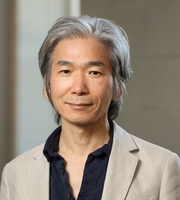Breaking through to the other side
The highest temperature superconductivity has been found when a
small fraction of electrons was added or removed from Mott
insulators where strong electron-electron repulsion prevents
electrons from moving freely. To dissect a Mott insulator and
examine whether it contains the seed to superconductivity, it would
be helpful to study what happens when an extremely small number of
electrons are either added or removed in a single Mott insulating
material. Recently, an international team composed of Yoichi Ando's
group at Osaka University, Seung-Hun Lee's group at University of
Virginia, and Kazu Yamada's group at Tohoku University, has
discovered such a system. The ambipolar cuprate (YLBLCO) provides
continuous access to both electron- and hole-doped regimes in a
single material, simply by altering its oxygen composition. Their
results revealed a marked difference in properties of electron- and
hole-doped regimes. Understanding these differences may hold
important clues to the origin of superconductivity. Future work on
this remarkable material should help to reach the understanding. The
work has been published in Nature Physics, August 2010 [1], and was
featured by a News and Views article in Nature Physics [2].
[1] K. Segawa et al., Nature Physics 6, 579-583 (2010).
[2] J. Orenstein and A. Vishwanath, Nature Physics 6, 566-567 (2010).
 Physics at Virginia
Physics at Virginia
